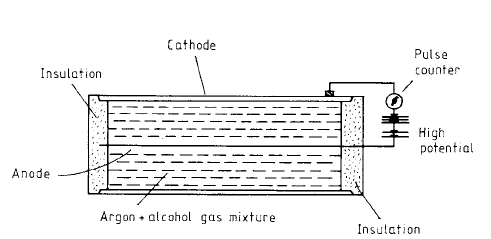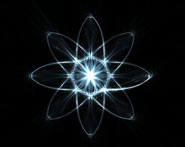


 الفيزياء الكلاسيكية
الفيزياء الكلاسيكية
 الكهربائية والمغناطيسية
الكهربائية والمغناطيسية
 علم البصريات
علم البصريات
 الفيزياء الحديثة
الفيزياء الحديثة
 النظرية النسبية
النظرية النسبية
 الفيزياء النووية
الفيزياء النووية
 فيزياء الحالة الصلبة
فيزياء الحالة الصلبة
 الليزر
الليزر
 علم الفلك
علم الفلك
 المجموعة الشمسية
المجموعة الشمسية
 الطاقة البديلة
الطاقة البديلة
 الفيزياء والعلوم الأخرى
الفيزياء والعلوم الأخرى
 مواضيع عامة في الفيزياء
مواضيع عامة في الفيزياء|
Read More
Date: 5-9-2020
Date: 6-2-2017
Date: 3-3-2016
|
X-ray astronomy: X-ray detectors
The first observation of a cosmic source other than the Sun was made in 1962 when soft x-rays were recorded and the object became known as Sco X-1. This experiment was made using a large-area Geiger counter flown on a sounding rocket.
The layout of a Geiger tube is shown in figure 1. Two electrodes within the enclosure are held at a high potential—but just below the discharge voltage of the gas medium. When ionizing radiation enters the chamber, the discharge breakdown is triggered with a subsequent pulse of current which is measured or counted. The amplification factor is typically 108 electrons. Saturation occurs so that the original photon energy cannot be elucidated and it is for this reason that they are generally no longer used, the proportional counter being preferred. Geiger counters also have a disadvantage in that following a pulse they suffer a dead-time, of the order of 200 μs, in which a second photon cannot be detected.
The proportional counter is closely related to the Geiger counter. A low voltage is applied across the tube so as to prevent saturation. The gain is of the order of 104–105 which is sufficient for detection by more conventional amplifiers. Provided all the energy of the x-ray photon is absorbed within the detection chamber, the size of the pulse relates to the photon energy. Thus,

Figure 1. A simple schematic diagram of a Geiger counter.
one 30 eV photon produces 1 electron–ion pair,
one 1 keV photon produces 36 electrons and
one 10 keV photon produces 360 electrons.
For low photon energies, a window is required for the radiation to enter the chamber. This might be in the form of a thin plastic sheet, mica or beryllium. The window allows diffusion of gas from the chamber and this must be replenished continuously for extended use of the detector. The position of the x-ray photon path can be obtained by measuring the pulse from both ends of a resistive anode and comparing the pulse strengths and shapes.
For photon energies above 30 keV, gas-filled detectors have limited stopping power and devices such as the proportional counter become inefficient. In this higher frequency domain, a scintillation detector might be used. This comprises a crystal such as sodium iodide doped with thallium placed before a photomultiplier tube. Any incoming x-ray generates a flash of light which is detected photoelectrically. The intensities of the light pulses are proportional to the x-ray energies.
In the extended region of the ultraviolet and for low-energy x-rays, both amplification and image recording can be achieved by a microchannel plate, the thin plate pierced with rectangular holes of the order of 25 μm in diameter. The top of the plate is coated with a photoelectron emitter for the x-ray energies of interest. The curved tubes have a large potential across their length, so that the emitted electrons produce an avalanche by secondary emission on being accelerated down the tube. The electron sprays and the positions of origin corresponding to the original x-ray image are then recorded by a subsidiary detector system (for example, phosphor and TV camera or CCD).



|
|
|
|
لشعر لامع وكثيف وصحي.. وصفة تكشف "سرا آسيويا" قديما
|
|
|
|
|
|
|
كيفية الحفاظ على فرامل السيارة لضمان الأمان المثالي
|
|
|
|
|
|
|
شعبة مدارس الكفيل: مخيَّم بنات العقيدة يعزِّز القيم الدينية وينمِّي مهارات اتخاذ القرار لدى المتطوِّعات
|
|
|